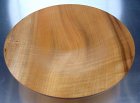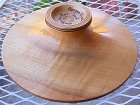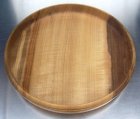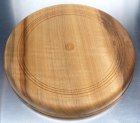So, I have been turning a fair amount of Oregon Myrtle wood, which is actually the California Bay Laurel, but that is a marketing thing.... The problem I have been having is with getting clean cuts. Most of the time I sharpen gouges, scrapers, and shear scrapers on the 180 grit CBN wheels. I was only getting fair results, but I wanted better. I tried the 320 wheel and the 600 wheel for edges and burrs, and still got the same results. On a whim, I went to the 80 grit wheel. Much better results. Flash back to the old coastal turners who used just the Big Ugly tool, and they sharpened on 60 and 80 grit standard grinding wheels. They did all of their work with that tool, including shear scraping. The debate about coarse/fine grit continues..... Some times if you experiment around enough, you find the solution. Well for one piece of wood...
robo hippy
robo hippy




